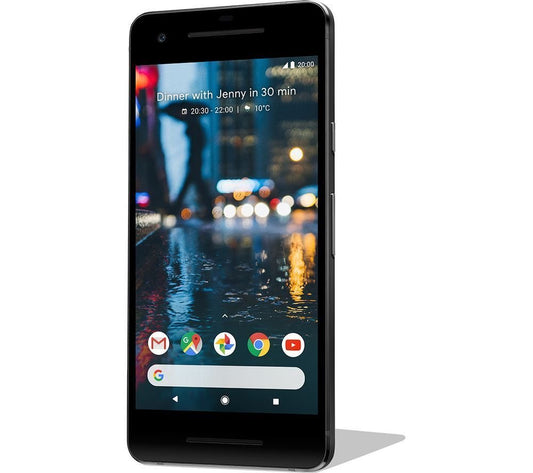In today's fast-paced world, there's a growing trend towards simpler mobile phones that focus only on voice calls and text messages. These devices are making a comeback, offering a break from the constant stream of notifications and apps that come with smartphones. This article explores the rise of voice and text only phones and how they are changing the way we communicate.
Key Takeaways
- Voice and text only phones are gaining popularity as people seek simpler communication tools.
- These phones help reduce digital overload by focusing on basic communication needs.
- The design of these phones is often minimalist, with user-friendly interfaces and long battery life.
- Voice and text only phones appeal to a wide range of demographics, from seniors to young professionals.
- The future of these phones looks promising, with potential advancements in technology and sustainability.
Historical Evolution of Mobile Phones
Early Mobile Telephony
The journey of mobile phones began in the early 20th century with radio telephones used in cars and other vehicles. These devices were large, heavy, and had limited range and coverage. Despite their limitations, they paved the way for future developments in mobile communication.
Car Phones and Early Mobile Networks
In 1946, the first commercial car phone network was launched in Chicago. This period also saw the development of mobile phone systems like NMT in Europe in 1969. Although these systems were still large and expensive, they increased accessibility and usage, primarily among businesses and wealthy individuals.
First Generation (1G) Cellular Networks
The introduction of the Motorola DynaTAC 8000X in 1983 marked the beginning of the first generation (1G) cellular networks. These phones used analog signal technology and had limited capacity and battery life. However, they introduced the concept of portable, personal mobile phones, even though they were still a niche product due to their high cost.
Second Generation (2G) Cellular Networks
The second generation (2G) cellular networks brought significant improvements with digital signal technology. This era saw increased capacity and call quality, along with the introduction of features like caller ID and text messaging. Widespread adoption of mobile phones began during this period, making them essential for communication and basic information access.
The Shift to Voice and Text Only Phones
Reasons for the Shift
In recent years, there has been a noticeable shift towards voice and text only phones. This change is driven by several factors. Many people are looking to simplify their lives and reduce the constant digital overload caused by smartphones. Additionally, these phones offer a sense of nostalgia and simplicity that many find appealing.
Key Features of Voice and Text Only Phones
Voice and text only phones come with a set of features that cater to basic communication needs. These include:
- Voice Calls: Clear and reliable voice communication.
- Text Messaging: Simple and efficient SMS services.
- Long Battery Life: Extended usage without frequent charging.
- Durability: Robust build quality to withstand daily wear and tear.
Market Demand and Demographics
The demand for these phones is growing, especially among specific demographics. Older adults who find smartphones too complicated, and young people who want to disconnect from social media, are key users. The TCL Flip Pro Voice & Text is a popular model that delivers the classic flip phone experience with a modern twist.
The rise of voice and text only phones marks a return to simpler times, focusing on essential communication without the distractions of modern smartphones.
Impact on Communication Practices
Simplification of Communication
Voice and text only phones have brought a simpler way to communicate. Without the distractions of apps and internet, people focus more on the core purpose of a phone: talking and texting. This shift encourages users to keep their messages short and to the point, making communication more efficient.
Reduction of Digital Overload
These phones help reduce digital overload. With fewer notifications and apps vying for attention, users can enjoy a more peaceful experience. This reduction in digital noise allows for better mental clarity and less stress, as users are not constantly bombarded with information.
Enhanced Focus on Voice and Text
By concentrating on voice and text, these phones bring back the importance of direct communication. Users are more likely to engage in meaningful conversations without the interference of social media or other distractions. This focus on basic communication methods can improve relationships and foster a deeper connection between individuals.
The rise of voice and text only phones marks a return to simpler, more focused communication, free from the constant interruptions of modern smartphones.
Design and User Interface of Voice and Text Only Phones
Minimalist Design
Voice and text only phones are known for their minimalist design. These devices often feature simple, clean lines and a compact form factor. The focus is on functionality rather than flashy aesthetics. This design philosophy ensures that the phones are easy to use and carry around. The lack of unnecessary features makes these phones more user-friendly and less distracting.
User-Friendly Interfaces
The user interface of voice and text only phones is designed to be straightforward and intuitive. Menus are typically easy to navigate, and the most commonly used functions, such as calling and texting, are easily accessible. This simplicity is particularly beneficial for those who are not tech-savvy or prefer a more straightforward device. The emphasis on ease of use ensures that users can quickly and efficiently perform essential tasks without getting bogged down by complex features.
Durability and Battery Life
One of the standout features of voice and text only phones is their durability. These phones are often built to withstand rough handling and are less likely to break if dropped. Additionally, the battery life of these phones is significantly longer compared to smartphones. With fewer power-hungry features, these devices can last several days on a single charge, making them ideal for users who need a reliable phone without the constant need to recharge.
The design and user interface of voice and text only phones emphasize simplicity and functionality, making them an excellent choice for those seeking a straightforward and reliable communication device.
Market Trends and Consumer Preferences
Growing Popularity
Voice and text only phones are gaining traction in today's market. Many consumers are looking for simpler devices that focus on basic communication needs. This trend is partly driven by a desire to disconnect from the constant barrage of notifications and apps found on smartphones. As a result, these phones are becoming a popular choice for those seeking a more straightforward and distraction-free experience.
Target Consumer Groups
Several groups are particularly drawn to voice and text only phones. These include:
- Seniors who prefer easy-to-use devices
- Young people who want to limit screen time
- Professionals seeking to reduce digital overload
- Parents looking for a first phone for their children
Each of these groups values the simplicity and focus that these phones offer, making them a growing segment of the market.
Comparison with Smartphones
When compared to smartphones, voice and text only phones offer several distinct advantages:
| Feature | Voice and Text Only Phones | Smartphones |
|---|---|---|
| Battery Life | Longer | Shorter |
| User Interface | Simple | Complex |
| Distractions | Minimal | High |
| Cost | Lower | Higher |
These differences highlight why some consumers are choosing to switch from smartphones to more basic devices. The emphasis on essential functions like calling and texting, combined with longer battery life and lower costs, makes these phones an attractive alternative for many.
The rise of voice and text only phones reflects a broader shift towards simplicity and intentional use of technology. This trend is reshaping the market and influencing consumer preferences in significant ways.
Future Prospects of Voice and Text Only Phones
Potential Technological Advancements
Voice and text only phones are expected to see some exciting technological advancements. While they may not adopt the latest flashy features of smartphones, they will likely benefit from improvements in battery life, durability, and connectivity. For instance, better battery technology could allow these phones to last even longer on a single charge, making them more reliable for users who need a dependable device. Additionally, advancements in materials could make these phones more rugged and resistant to damage.
Sustainability and Longevity
Sustainability is becoming a key focus in the tech industry, and voice and text only phones are no exception. Manufacturers are likely to prioritize eco-friendly materials and designs that extend the lifespan of these devices. This shift not only helps the environment by reducing e-waste but also appeals to consumers who are increasingly conscious of their environmental impact. By creating phones that last longer and are easier to recycle, companies can meet the growing demand for sustainable products.
Integration with Other Devices
Voice and text only phones may also see better integration with other devices. For example, they could be designed to work seamlessly with smartwatches or other wearable tech, providing users with a simple yet connected experience. This integration can offer the best of both worlds: the simplicity of a basic phone with the added convenience of modern technology. As more people look for ways to reduce their screen time, these phones could become a popular choice for those seeking a more balanced digital life.
The future of voice and text only phones looks promising, with advancements in technology, sustainability, and integration offering a simplified yet connected experience for users.
Case Studies and Real-World Examples
Popular Models in the Market
Voice and text only phones have seen a resurgence in popularity. Some of the most well-known models include the Nokia 3310, the Punkt MP02, and the Light Phone II. These devices focus on simplicity and reliability, offering users a break from the constant notifications and apps found on smartphones.
User Testimonials
Many users have shared their positive experiences with these phones. They appreciate the minimalist design and the ability to focus on conversations without distractions. One user mentioned how the phone helped them "revolutionize customer service" by allowing them to concentrate on calls without the interference of social media or games.
Impact on Specific Demographics
These phones are particularly popular among older adults who find smartphones too complicated, as well as young professionals looking to reduce their screen time. The devices are also favored by parents who want to give their children a phone without exposing them to the internet at a young age.
The rise of voice and text only phones is a testament to the growing desire for simpler, more focused communication tools. They offer a refreshing change from the overwhelming nature of modern smartphones.
Conclusion
In summary, the rise of voice and text-only phones marks a return to simpler communication. These devices strip away the distractions of modern smartphones, focusing on what truly matters: staying connected. As technology continues to evolve, these phones remind us that sometimes, less is more. They offer a straightforward way to communicate, free from the constant notifications and apps that can overwhelm us. This trend highlights a growing desire for balance in our digital lives, showing that even in a high-tech world, simplicity can be a powerful choice.
Frequently Asked Questions
What are voice and text only phones?
Voice and text only phones are mobile devices designed to perform basic communication functions like making calls and sending text messages. They do not support advanced features like internet browsing, social media, or app usage.
Why are people switching to voice and text only phones?
People are switching to voice and text only phones to reduce digital distractions, simplify their communication methods, and avoid the constant notifications and apps that come with smartphones.
Who is the target audience for voice and text only phones?
The target audience includes individuals who want to minimize digital distractions, parents looking for simpler phones for their kids, and seniors who prefer easy-to-use devices.
What are the main features of voice and text only phones?
The main features include calling, texting, long battery life, durability, and a simple user interface. Some models may also have basic tools like a calculator and alarm clock.
How do voice and text only phones impact communication?
These phones simplify communication by focusing solely on voice calls and text messages. This can reduce digital overload and help users stay more present in their interactions.
Are voice and text only phones more affordable than smartphones?
Yes, voice and text only phones are generally more affordable than smartphones. They have fewer features and simpler technology, which makes them less expensive to produce and purchase.








